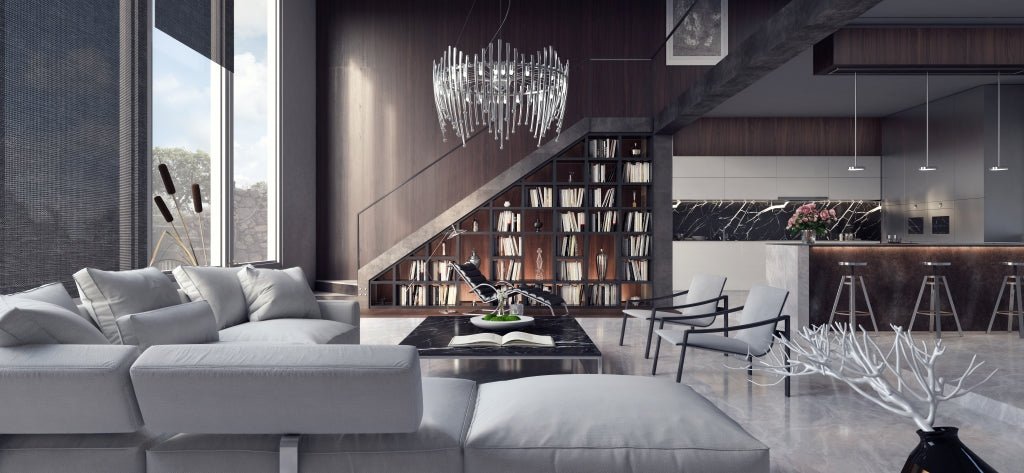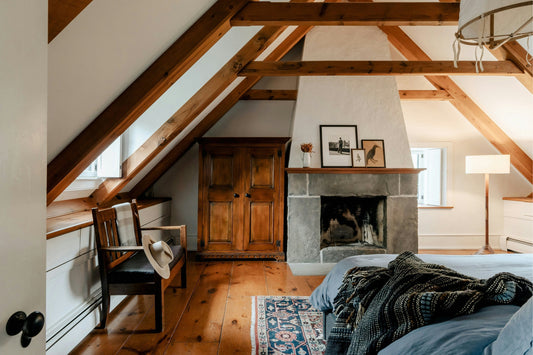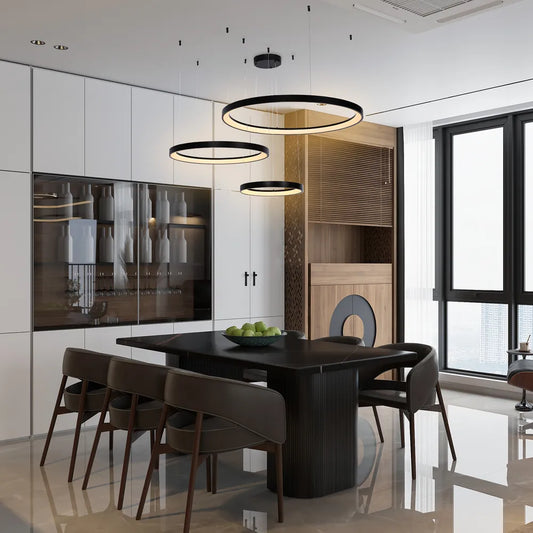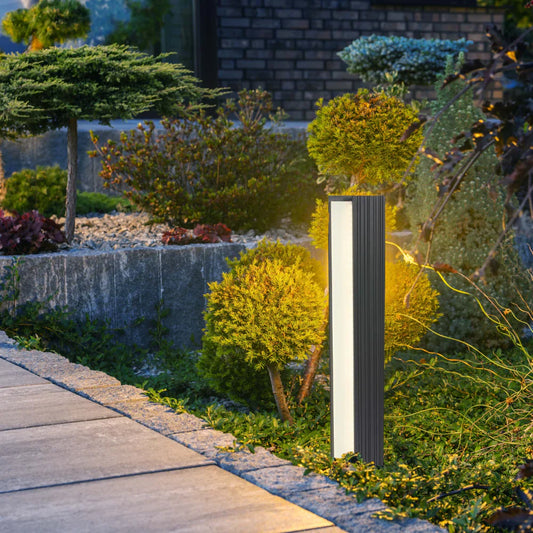
The amount and quality of lighting in your home is crucial to its functionality and appearance. If you want your home to be as comfortable as possible, a good rule of thumb is to have enough light so that you can see what you're doing when you need it. This doesn't mean over-lighting everything, though; instead, take into account the needs of the people who will be using the room (e.g., children or elderly people) and make sure that their needs are met by both quantity and quality of light.
The location of the lights is also important; for example, if you have low ceilings or high ceilings, use adjustable lamps so that they can be moved easily around the room (or even swapped out for different types of bulbs). The type of fixture used in a particular room can also affect how much light it produces; for instance, fluorescent bulbs tend to cast more light than incandescent bulbs do.
What is the Importance of Lighting Quantity and Quality?
The importance of lighting quantity and quality in any environment—be it residential, commercial, or public spaces—cannot be overstated. Both aspects play critical roles in determining the functionality, aesthetics, safety, and well-being of occupants. Here's a deeper look into why each is crucial:
Lighting Quantity
Adequate Illumination: Proper lighting quantity ensures that spaces are adequately illuminated for the tasks performed within them. Insufficient lighting can lead to eye strain and fatigue, negatively affecting productivity and comfort.
Safety and Navigation: Adequate lighting helps in preventing accidents and injuries by ensuring that obstacles and steps are clearly visible. This is especially important in stairways, hallways, and outdoor areas.
Energy Efficiency: While sufficient lighting is necessary, over-illumination can lead to wasted energy and higher electricity costs. Balancing the lighting quantity ensures that spaces are lit appropriately without excessive energy consumption.
Mood and Atmosphere: The amount of light in a room can significantly affect the mood and atmosphere. Brightly lit spaces are perceived as more vibrant and energetic, suitable for offices and kitchens, while softer lighting creates a relaxing and intimate atmosphere, ideal for dining areas and living rooms.
Lighting Quality
Color Accuracy: High-quality lighting renders colors more accurately, which is essential in settings where color differentiation is crucial, such as in retail environments, art studios, and medical facilities.
Visual Comfort: Quality lighting minimizes glare and shadows, reducing eye strain and making spaces more comfortable to occupy. This is particularly important in workplaces and educational settings, where individuals spend extended periods under artificial lighting.
Health and Well-being: Lighting quality impacts circadian rhythms, which regulate sleep patterns and overall health. Natural light and artificial lighting that mimics daylight can help maintain these natural cycles, enhancing well-being.
Aesthetics and Design: Good quality lighting enhances interior design by highlighting textures, colors, and architectural features. It can transform the appearance of space, making it more appealing and functional.
Flexibility: High-quality lighting systems often offer greater control over light intensity and color temperature, allowing for adjustments according to time of day, specific activities, or changes in natural light availability.
How to Measure the Required Lighting Amount and Quality?
Measuring the required amount and quality of lighting in a space involves understanding various metrics and considerations that impact visual performance, comfort, and ambiance. Here's a guide to help you assess both aspects effectively:
Measuring Lighting Quantity
Lumens (Luminous Flux): Lumens measure the total amount of visible light emitted by a source. To determine the required lighting amount, calculate the lumens needed for the specific area based on its use. For example, a kitchen might require more lumens for task lighting compared to a bedroom designed for relaxation.
Lux (Illuminance): Lux measures the amount of light per square meter. It helps in assessing how much light is reaching a surface or area for adequate illumination. General guidelines suggest different lux levels for various settings (e.g., 500 lux for office work, 300 lux for general living spaces).
Foot-Candles: Similar to lux, foot-candles measure light output per square foot. This metric is commonly used in the United States.
To calculate the required illuminance:
Determine the room's square footage or square meters.
Multiply the area by the recommended lux or foot-candle level for the space's intended use.
Measuring Lighting Quality
Color Rendering Index (CRI): CRI measures a light source's ability to reveal the colors of various objects faithfully in comparison with a natural light source. CRI is rated on a scale from 0 to 100, with higher values indicating better color accuracy. A CRI of 80 or above is considered good for most indoor applications.
Color Temperature: Expressed in Kelvins (K), color temperature describes the light color produced by a light source, ranging from warm (lower K values, e.g., 2700K) to cool (higher K values, e.g., 6500K). The choice depends on the desired ambiance and functional requirements of the space.
Glare Rating: Assessing the potential for glare—excessive brightness that causes discomfort or reduces visibility—is crucial, especially in workspaces. This involves considering the placement of light sources relative to work surfaces and the use of diffusers or task lighting to minimize direct glare.
Uniformity Ratio: Good lighting design ensures uniformity, meaning the light is evenly distributed without significant bright or dark spots. A uniformity ratio (minimum illuminance to average illuminance) can be calculated to assess this aspect, aiming for ratios that support the space's function.
Natural Light Integration: Assessing how much natural light is available and how it interacts with artificial lighting throughout the day is crucial for optimizing lighting quality and energy efficiency.
Tools and Assessments
Light Meters: Handheld light meters can measure lux or foot-candles in a space, providing immediate readings of current illuminance levels.
Software Simulations: Lighting design software can simulate lighting layouts and performance, including illuminance, CRI, and glare effects, based on the specific parameters of a space.
Professional Assessment: For complex spaces or specific requirements, consulting with a lighting designer or engineer can provide tailored assessments and solutions that balance both the quantity and quality of lighting.
A light source for example an LED bulb is the most common types of lights used in homes today.

What is the Importance of the Amount and Quality of Lighting in Living Spaces?
The amount and quality of lighting in living spaces are crucial for creating environments that are not only functional but also conducive to well-being, comfort, and aesthetic appeal. Here's a closer look at why these aspects of lighting are so important:
Enhancing Functionality and Safety
Adequate Illumination: Proper lighting levels ensure that activities such as reading, cooking, and socializing can be performed comfortably and safely, reducing the risk of eye strain and accidents.
Task Lighting: Targeted lighting in areas like the kitchen countertop or reading nooks enhances functionality by providing the necessary illumination for specific tasks.
Promoting Health and Well-being
Circadian Rhythm Support: Exposure to natural light and properly designed artificial lighting can help regulate the body's circadian rhythms, improving sleep quality and overall health.
Mood Regulation: Lighting can significantly affect mood and mental health. Brighter light levels are associated with increased alertness and positive mood, while warmer, dimmer lights promote relaxation and calmness.
Aesthetic Enhancement
Space Perception: Lighting can alter the perception of a space's size and proportions. Bright, uniformly distributed light makes spaces appear larger, while focused lighting can highlight architectural features or artwork.
Ambiance Creation: The quality of light, including its color temperature and rendering, can dramatically affect the ambiance of a room, making it feel warm and inviting or cool and energizing.
Energy Efficiency and Sustainability
Efficient Use of Light: Optimizing the amount and quality of lighting contributes to energy efficiency, reducing electricity consumption and lowering utility bills.
Long-term Sustainability: Incorporating natural lighting and choosing energy-efficient lighting fixtures and bulbs support environmental sustainability efforts.
Visual Comfort
Reduced Glare and Shadows: Proper lighting design minimizes glare and shadows, which can cause discomfort and hinder visibility, ensuring spaces are comfortable to use at any time of the day.
Color Rendering: High-quality lighting accurately renders colors, making interiors look vibrant and true to life, which is particularly important in spaces where the aesthetic is a priority.
Flexibility and Adaptability
Adjustable Lighting: Modern lighting solutions offer the flexibility to adjust the intensity and color temperature of light, allowing spaces to be adapted to different activities or times of the day.
What is the Importance of Lighting Quality in Working Areas?
The quality of lighting in working areas is paramount, significantly impacting productivity, comfort, health, and safety. A well-designed lighting system that considers the quality of light can transform a workspace, influencing various aspects of daily operations and employee well-being. Here's a closer look at the importance of lighting quality in working areas:
Enhances Productivity and Concentration
Optimal Illumination: Proper lighting levels help reduce eye strain and visual fatigue, enabling employees to work more efficiently and with greater accuracy, especially in tasks requiring attention to detail.
Task-Specific Lighting: Adequate task lighting ensures that specific activities, such as reading, writing, or computer work, can be performed comfortably, thereby enhancing productivity.
Improves Health and Well-being
Circadian Rhythm Support: Exposure to natural light or artificial lighting that mimics natural daylight patterns can help regulate the body's circadian rhythms, improving sleep quality and overall well-being.
Mood and Morale: Lighting quality affects mood; bright, natural-looking light can boost employee morale and create a more positive working environment.
Ensures Visual Comfort
Reduced Glare and Shadows: Properly designed lighting minimizes glare on screens and work surfaces, as well as harsh shadows, which can cause discomfort and hinder task performance.
Colour Rendering: High-quality lighting renders colors accurately, which is crucial in design, art, manufacturing, and other fields where color differentiation is essential.
Promotes Safety
Accident Prevention: Adequate lighting reduces the risk of accidents and injuries by ensuring that all areas of the workplace are well-lit, hazards are visible, and signage is readable.
Emergency Situations: In emergencies, good lighting is critical for safe evacuation and for identifying safety equipment and exit routes.
Energy Efficiency and Sustainability
Energy Savings: High-quality, energy-efficient lighting systems reduce electricity consumption and lower operating costs. LED lighting, for example, offers excellent light quality while consuming significantly less energy than traditional bulbs.
Environmental Impact: By choosing energy-efficient and long-lasting lighting solutions, businesses can minimize their environmental footprint, contributing to sustainability goals.
Aesthetic Appeal
Enhanced Workspace Aesthetics: Beyond functionality, good lighting contributes to the aesthetic appeal of the workspace, making it more inviting and pleasant for employees and visitors alike.
Adaptability and Flexibility
Adjustable Lighting: Workspaces benefit from lighting systems that can be adjusted in terms of intensity and color temperature to adapt to different tasks, times of day, or personal preferences, further enhancing comfort and productivity.
What Are the Characteristics of a Good Amount of Lighting?
If you want to know what the characteristics of a good amount of lighting are, then the following will give you an idea:
- The right amount of light is somewhere between enough and too much. Too much light can be distracting, while too little can be just as bad.
- The right amount of light should both make your subject stand out and illuminate them in a realistic way. For example, if you're taking pictures of a person at night, they need to have enough light on their face so that it doesn't look like they're in shadow.
- The right amount of light also needs to have the right color temperature so that it looks natural and doesn't wash out any details or colors in your subject's skin or clothing (e.g., blue sky).
What are the Points to Consider When Buying Lighting?
Purpose and Function: Identify the primary purpose of the lighting—ambient, task, accent, or a combination thereof—to select the appropriate type and intensity of lighting.
Light Quality: Consider color rendering index (CRI) and color temperature (measured in Kelvins) to ensure the light accurately reflects colors and creates the desired ambiance.
Energy Efficiency: Look for energy-efficient options like LED lights to reduce energy consumption and costs while minimizing environmental impact.
Durability and Lifespan: Evaluate the longevity of the lighting solution to ensure it offers a good return on investment over time.
Design and Aesthetics: Choose lighting fixtures that complement the space's design theme and enhance its overall appeal.
Adjustability and Control: Options for dimming and adjusting light intensity and color temperature can accommodate various activities and times of day.
Installation and Maintenance: Consider the ease of installation and ongoing maintenance requirements, including bulb replacement and cleaning.
Is the Amount of Lighting Important for Occupational Health and Safety?
Proper lighting is crucial in workplaces to prevent accidents, reduce eye strain, and enhance productivity. Insufficient lighting can lead to mistakes, injuries, and increased fatigue, while excessive lighting can cause glare and discomfort. Ensuring adequate and appropriate lighting levels is a fundamental aspect of occupational health and safety regulations.
What are the Benefits of Correct Lighting?
Enhanced Productivity: Proper lighting supports concentration and accuracy, especially in tasks requiring visual acuity.
Improved Mood and Morale: Lighting that mimics natural daylight can boost employees' mood and energy levels.
Reduced Eye Strain and Headaches: Adequate task lighting helps prevent eye strain and headaches associated with prolonged screen use.
Safety: Correct lighting reduces the risk of accidents and injuries by ensuring all areas are well-lit and hazards are visible.
Aesthetic Appeal: Well-designed lighting enhances the appearance of spaces, contributing to a pleasant working or living environment.
What Kind of Studies Are Included in the Literature on Human-Centered Lighting?
The literature on human-centered lighting is vast and growing. The literature on human-centered lighting has evolved over time and continues to expand. It has been both a source of inspiration and source of criticism for those who have worked in the field of human-centred design.
The literature on human-centered design has evolved from early theories about the design process, to more recent theories on how to build better products, to more recent ideas about the role of designers as facilitators or coaches for their clients.
Does Lighting Quantity and Quality Cover a System To Also Meet Physiological and Psychological Requirements?
A well-designed lighting system should meet both physiological and psychological requirements by:
Supporting Circadian Rhythms: Mimicking natural light patterns to promote better sleep and alertness.
Enhancing Visual Comfort: Reducing glare and providing uniform lighting to prevent eye strain.
Adjusting to Tasks and Activities: Allowing customization of lighting levels and color temperatures to suit specific tasks and personal preferences.
Creating Ambiance: Using lighting to evoke positive emotions and create a sense of well-being.



